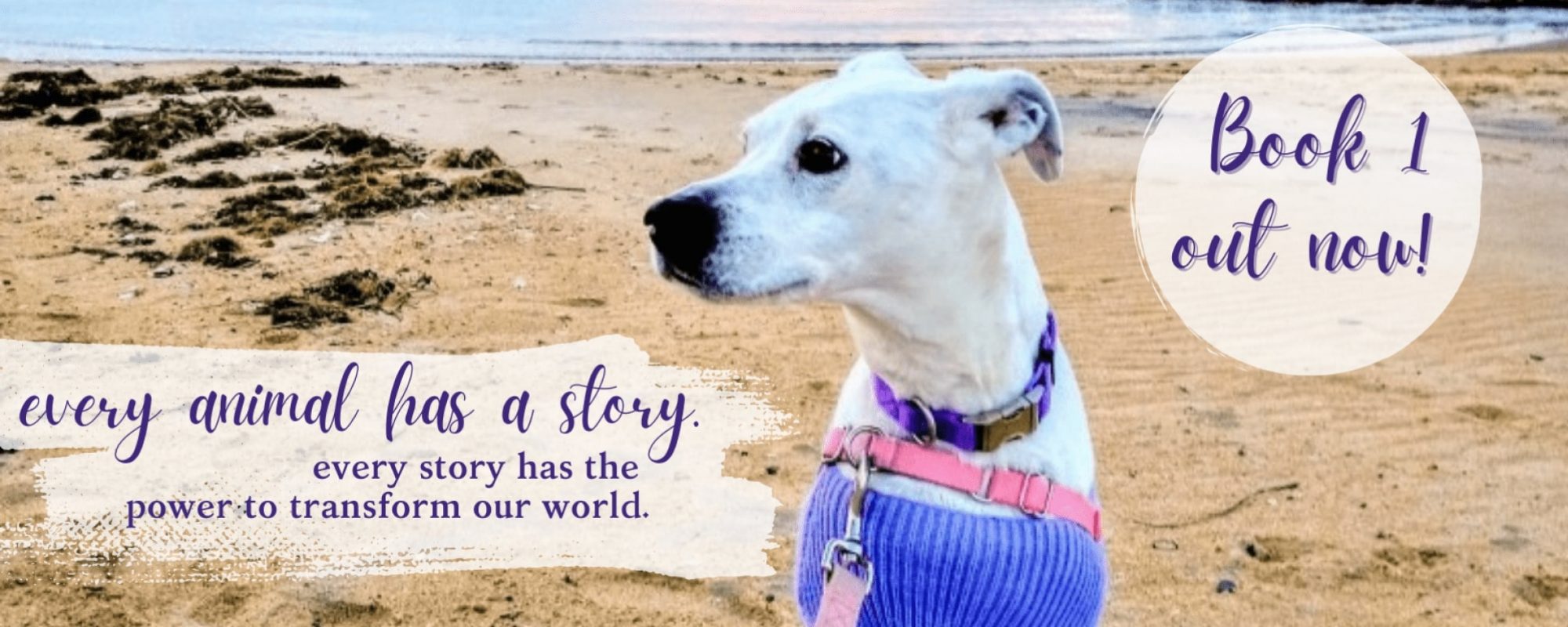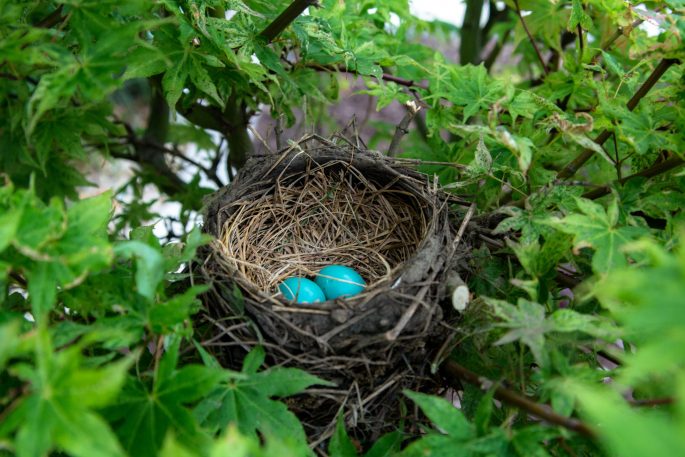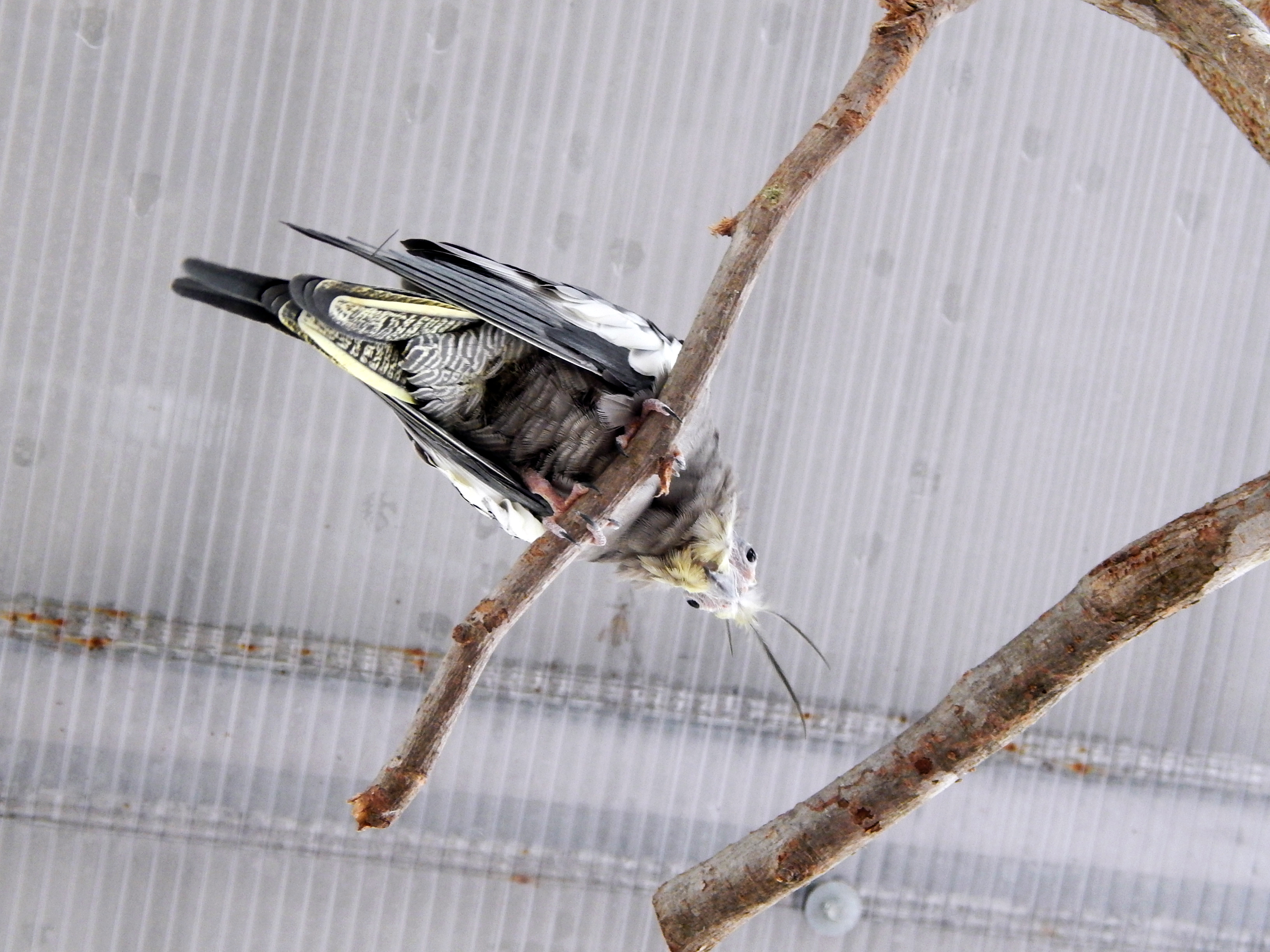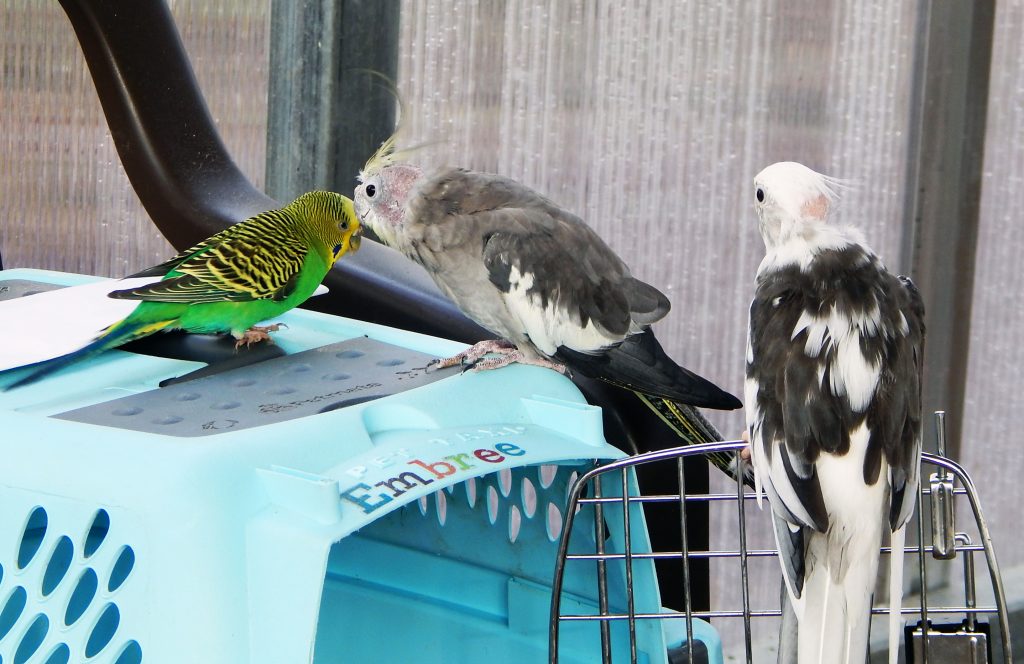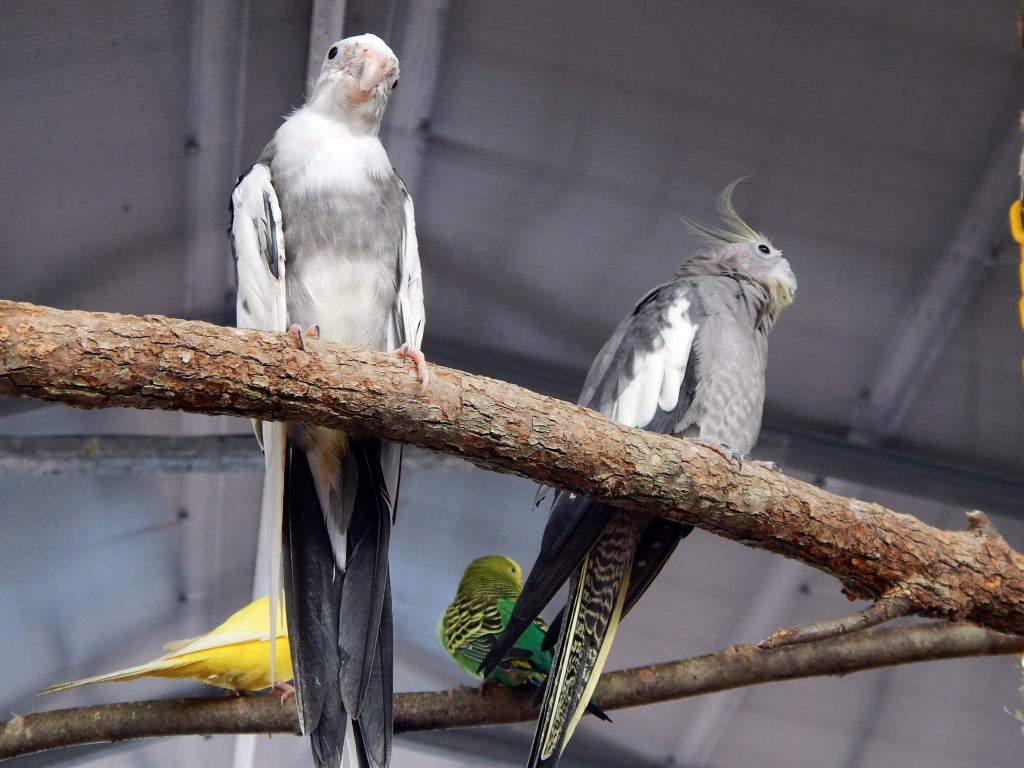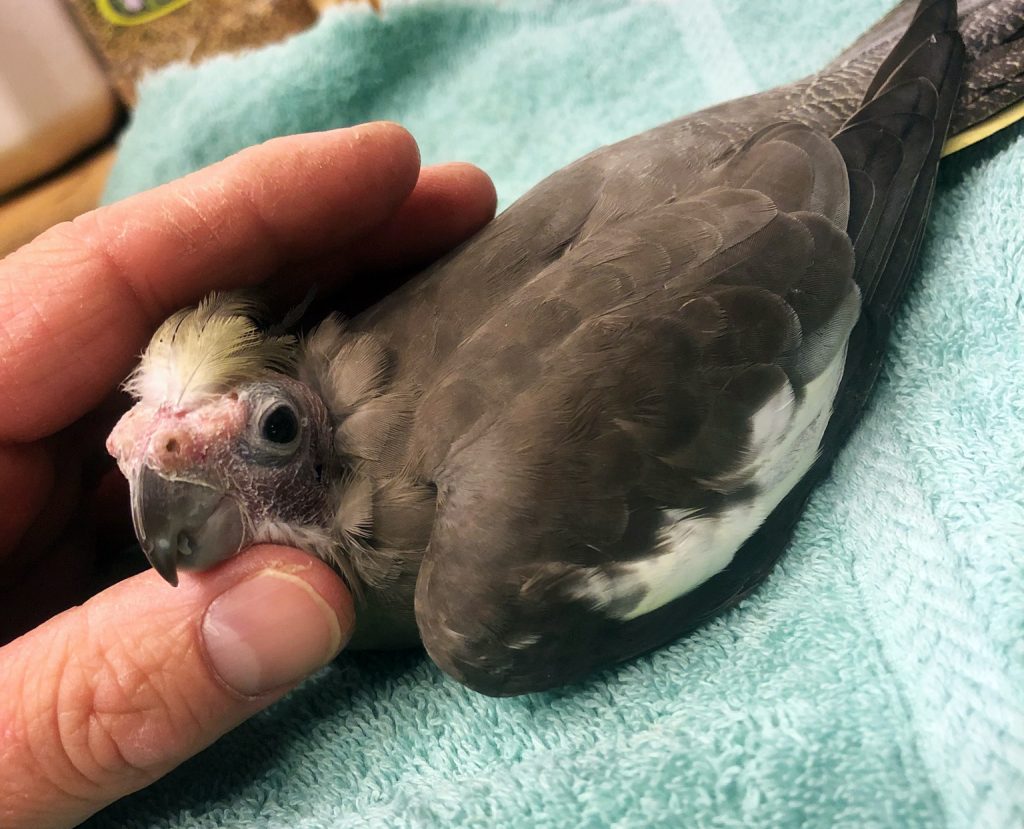Guest post by Judith Morrison
It was the beginning of summer during one of our scheduled evening phone calls, when my mother first mentioned a robin was building a nest in her light fixture on the balcony.
“But I swept away the twigs the bird had started collecting,” she said. “Some of the twigs are still on the balcony floor. What a mess!” She’d have to go out and finish the sweeping later.
The following evening while on the phone with her, after going over all the horrible news events of the day, she told me that the robin came back. “The robin started building her nest in the same fixture. She’s out there now.”
“Is she using the twigs that were on the balcony floor?” I asked.
“No,” Mom said. “She’s using new material. You should see what she’s collected this time. There’s ribbon in various colors, string, pieces of what looks like hay. This time I’m going to let her build her nest,” Mom said. “I don’t have the heart to take it down.”
The robin’s persistence and dedication had paid off. “She’s a smart bird,” Mom said. I agree with her. “My balcony light fixture is the perfect spot for a nest. It’s covered to protect from the wind and rain. The light can provide warmth, and she’s away from prey. It’s perfect for a nest,” Mom added.
In the following days, my mom reported back on how the bird was progressing with nest-building. “She works so hard,” Mom said. “She doesn’t seem to leave her nest for more than 10 minutes at a time. And this nest, you should see it. It’s so tightly woven and secured around my light fixture.”
I started looking forward to the nightly robin nest-building updates. I especially appreciated it after going over all the terrible news events of the day. I noticed how my local news channel always ended their broadcast with a feel-good animal story. We’d end our conversation on a light note.
I started noticing the birds in my neighborhood: robins, woodpeckers, sparrows, magpies, and osprey. Was it my imagination, or were there more birds than usual in the neighborhood this summer? Or was I more aware of the birds because of the robin?
Either way, I looked at the robin and the other birds as a sign of hope. This was especially important because we’re in a time that feels hopeless in a lot of ways—so any sign of hope is good. I found myself wishing a bird would build a nest at my house. I had a perfect, protected light fixture on my front terrace. I’d welcome a bird who wanted to build a bird’s nest.
“Neighbors are stopping below my balcony to admire the robin’s nest,” my mom said. “They’ve been positive, except for Buddy, who doesn’t approve.”
As the hot and humid days of summer went on, my mom described the robin’s routine in more detail. “She sits on her nest all day. She seems to briefly fly away at night for no more than
10 minutes, to get food. Another robin—the father, I guess—sits perched on the balcony railing now and then.”
“But only now and then,” she repeated. “Not like my robin, who is perched on her nest all the time. I check on her every morning first thing while brewing my coffee. I quietly open the balcony door so as not to disturb her. The thing is, I don’t go on the balcony and don’t use it, as I feel I’m disturbing her. It’s her balcony now. Her home.”
The following week, my husband and I went to visit Mom. It was her birthday, so we brought lemon cake. I made tea and watched my husband sprinkle powdered sugar on the lemon cake and then cut it into three pieces.
“I don’t want any. I just ate lunch,” Mom said.
“Well, you can have your piece later,” I said.
I noticed my mother didn’t seem impressed or to be in the mood for the lemon cake, or perhaps for a visit at all. There was a lull in the conversation. It was a good time to see the robin.
“Open the door quietly,” Mom said.
I opened the balcony door and turned my head to the right, and there the robin was in all her splendour. She was big and plump, and very close. I could have touched her. The up-close view came as a shock.
“Wow,” I said. “You really are living with a bird!”
We sat in the living room and had tea and talked about birds, animals, and nature. I admire how my mom walks every day at 87 years old, as long as she isn’t in too much pain from her arthritis. We went from birds to talking about the book on her coffee table, which was about Canadian wolves.
“I’m done with it. Take it back,” she said to my husband, who had lent her the book. “Make sure there are none of my bookmarks still in it.”
Mom started to slowly get up, and so we followed her lead. We got up to collect the teacups and leave. It seemed that was enough of a visit today, and she wanted to get back to her routine… to her afternoon walk, early dinner, and quiet time—just her and the bird.
“You can take the lemon cake back, too,” she added.
“Well, we’ll leave you your piece,” I said. With that, we left. I knew she wanted to go for a walk while it was still light out, and we were holding her up. We said our goodbyes.
Not too many days after our birthday visit, Mom said she saw baby robins. “There are two baby robins in the nest. Probably more. And one flew. I thought he was going to land on the ground, but he didn’t. He went into a tree and disappeared.”
Not many days after that, the mother and babies were both gone. Those birds, who had occupied so many evening phone conversations, were gone. The nest was empty. I was glad I was able to get such an up-close look when I did.
“I miss her. I miss hearing the chirping in the morning,” Mom said. “She was company.”
And I also missed her. I missed hearing about her and the easy conversation with my mother around her.
“But when I was sure she wasn’t coming back, I took down the nest,” Mom said a few weeks later when the subject of the robin came up.
Mom went on to describe the intricate cloth the robin had tightly woven to make her nest. My mother and I had empty nest syndrome. Through a Google search, though, I read that the robins may come back to their old nesting site next year and make a new nest. By now, during the late summer phone calls, there was a chill in the air. Autumn was on its way.
“I hope the robin returns,” Mom said.
“I hope she returns, too,” I replied.
“I guess we’ll have to wait until next summer to see,” she said.
Judith Morrison enjoys writing personal essays on travel, fashion, animals and lifestyle. She has been published in The Globe and Mail, Christian Science Monitor, and on CBC radio. Her most recent essays have appeared in Adventuress Travel Magazine, lolcomedy.com, and Dogs Today Magazine. Her blog for women, “Fun and Pampering in YYC,” is about things to do and places to go in her hometown of Calgary, Alberta.
Judith has enjoyed teaching ESL to students at various levels and with diverse backgrounds throughout her teaching career. She also likes traveling, especially in Turkey and Mexico, journal writing, and taking long walks with Samson, the Border Collie mix, and Zoey, the labradoodle.
Want to submit your own guest post about a remarkable animal? Read guidelines and submit here.

